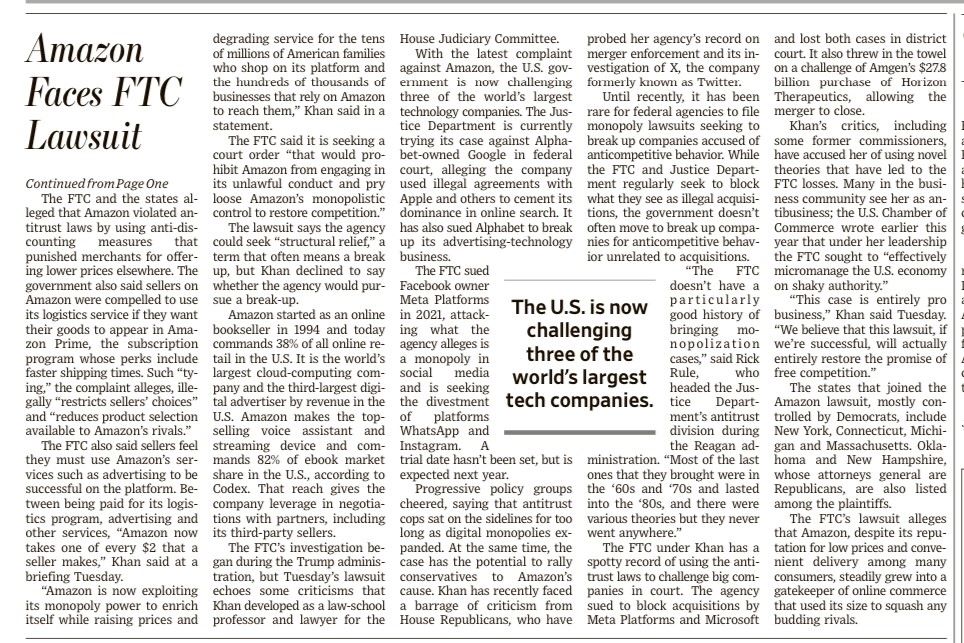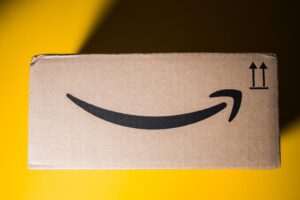Redatto il 27 settembre, aggiornato il 30 settembre 2023
…The FTC and the states alleged that Amazon violated antitrust laws by using anti-discounting measures that punished merchants for offering lower prices elsewhere. The government also said sellers on Amazon were compelled to use its logistics service if they want their goods to appear in Amazon Prime, the subscription program whose perks include faster shipping times. Such “tying,” the complaint alleges, illegally “restricts sellers’ choices” and “reduces product selection available to Amazon’s rivals.”
The FTC also said sellers feel they must use Amazon’s services such as advertising to be successful on the platform. Between being paid for its logistics program, advertising and other services, “Amazon now takes one of every $2 that a seller makes,” Khan said at a briefing Tuesday. “Amazon is now exploiting its monopoly power to enrich itself while raising prices and degrading service for the tens of millions of American families who shop on its platform and the hundreds of thousands of businesses that rely on Amazon to reach them,” Khan said in a statement.
The FTC said it is seeking a court order “that would prohibit Amazon from engaging in its unlawful conduct and pry loose Amazon’s monopolistic control to restore competition.” The lawsuit says the agency could seek “structural relief,” a term that often means a break up, but Khan declined to say whether the agency would pursue a break-up.
Amazon started as an online bookseller in 1994 and today commands 38% of all online retail in the U.S. It is the world’s largest cloud-computing company and the third-largest digital advertiser by revenue in the U.S. Amazon makes the topselling voice assistant and streaming device and commands 82% of ebook market share in the U.S., according to Codex. That reach gives the company leverage in negotiations with partners, including its third-party sellers…
The Wall Street Journal 27 settembre 2023

In estrema sintesi la vicenda è questa : Amazon abuserebbe della sua posizione dominante (38% del mercato dell’e-commerce USA) punendo i rivenditori – i 3P sellers – presenti sulla sua piattaforma che offrono sconti ad altri distributori, forzando i fornitori a usare i suoi servizi logistici e la sua pubblicità.
Su ogni 2 $ di ricavi dei fornitori 1$ andrebbe ad Amazon, attraverso contibuti forzosi.
Aveva cercato anche, senza successo di bloccare l’acquisto di Activision da parte di Microsoft.
Ovviamente sta facendo le sue valutazioni anche sul caso Albertsons- Kroger e sulle recenti acquisizioni di Aldi negli USA.
(*) non è così, a volte anche il Financial Times può dare dei dati fuorvianti ma si è ormai creato un mito. Per capire meglio il “mondo” del gigante creato da Jeff Bezos, leggi anche: La differenza tra Amazon e Alibaba




